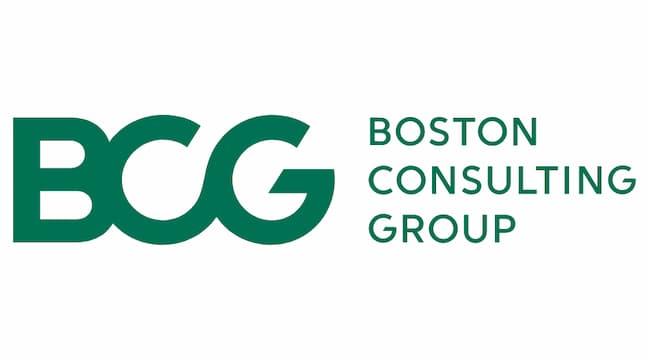The findings of a joint study by Boston Consulting Group (BCG) and EDHECinfra, a venture of the renowned international EDHEC Business School, published recently reveals that large markets such as Nigeria, Ghana, South Africa, Brazil, and parts of Asia have huge potential to attract digital infrastructure projects but are untapped markets for fiber optics investments.
That, according to the report, can be linked to uncertain economic growth that has made fiber-penetration levels uneven despite a clear demand for fiber infrastructure projects.
In the new report entitled “Infrastructure Strategy 2022: A Pivot to the Digital Frontier,” Boston Consulting Group (BCG) and EDHECinfra provide a new perspective on different investment strategies and risk-adjusted-performance groups of infrastructure investors.
“Although demand for fiber optic projects is most pronounced in less-wealthy economies—large and diverse regions with significant potential, such as Nigeria, Ghana, South Africa, Brazil, and parts of Asia are untapped markets—fiber penetration is also uneven in places where economic growth is less uncertain,” the report states.
The study points out that the increasing desire for higher speeds and reliable online access will inevitably lead to a huge expansion of fiber optic installations in new networks in low- and middle-income nations and existing networks in higher-income countries. Ultimately, fiber, which has already begun to make inroads in networks everywhere, will replace legacy (primarily copper) infrastructure completely, particularly as 5G rolls out.
Commenting on the findings of the study, Managing Director and Partner, BCG Nigeria, Stefano Niavas, says, “Fibre optic investment is required to expand the capacity of the undersea cable infrastructure on the shores of Nigeria beyond the cities to other regions of the country to make connectivity truly ubiquitous.
“With the growing demand for fast and reliable Internet connectivity, investing in digital infrastructure is profitable and it is expected that investment in fibre installations all over the country will accelerate in a few years from now.”
Other key findings of the report include:
- A pivot to the digital frontier. As the analysis shows, all investors plan to overinvest in digital infrastructure as we advance. While this also entails data centers, towers, satellites, and subsea connections, the appetite for broadband connectivity remains high. As Roman Friedrich, a BCG managing director and partner and a co-author of the report, explains: “The increasing desire for higher speeds and reliable online access will lead inevitably to a huge expansion of fiber optic installations in new networks in developing nations as well as in existing networks in more developed countries. Ultimately, fiber will replace legacy (primarily copper) infrastructure completely, particularly as 5G rolls out.”
- North American Pensions Funds have the highest risk-adjusted returns in 2021 and are, in fact, the top-ranked peer group. Other peer groups took more risk to achieve lower average returns, while Canadian investors are very close to the all-investor average. At the bottom of the risk-adjusted rankings, EU and UK pension funds take less risk but also achieve comparatively lower returns. As Frederic Blanc-Brude, director of EDHECinfra and a co-author of the report, explains, “certain investors have gained exposure to different segments of the infrastructure universe over time and each segment has performed differently.”
- Oil and gas still pay. Although one-third of the surveyed investors have expressed that they want to decrease their exposure to conventional power generation, the main beneficiary of the 2021 recovery, after transport, was gas and conventional power generation—especially since wind levels were lower than usual. Those peer groups that stayed more exposed to these sectors benefited, while peer groups that have already mostly divested conventional power generation from their portfolios did not.
- Operational value creation is paramount. While operational value creation has always been a paradigm for value-add infrastructure investors, 90% of Core and Core+ investors agree that the focus will shift toward more hands-on value-creation work with their portfolio firms. As Wilhelm Schmundt, BCG’s global head of the infrastructure investors’ sector and a co-author of the report, sees it: “The steep increase in asset prices, dealing with inflation and the rise of factor prices, as well as secular trends like energy transition and digitalization, have made operational value creation a must-have capability for asset managers across all industry sectors. Limited partners are putting increasing scrutiny on understanding how general partners are building their respective muscles.”
The report can be accessed here.
About Boston Consulting Group
Boston Consulting Group partners with leaders in business and society to tackle their most important challenges and capture their greatest opportunities. BCG was the pioneer in business strategy when it was founded in 1963. Today, we work closely with clients to embrace a transformational approach aimed at benefiting all stakeholders—empowering organizations to grow, build sustainable competitive advantage, and drive positive societal impact.
Our diverse, global teams bring deep industry and functional expertise and a range of perspectives that question the status quo and spark change. BCG delivers solutions through leading-edge management consulting, technology and design, and corporate and digital ventures. We work in a uniquely collaborative model across the firm and throughout all levels of the client organization, fueled by the goal of helping our clients thrive and enabling them to make the world a better place.
About EDHEC Infrastructure Institute
EDHECinfra® is a venture of EDHEC Business School and a provider of indices and analytics for the infrastructure investment universe. Because the majority of infrastructure assets are not publicly traded, there has traditionally been a vast knowledge gap when it comes to gauging the prices of these assets and their evolution. We are closing that gap with analytics and calculated indexes that already cover 25 countries representing an investable universe of 7,000 companies. We are based in Singapore and London. Visit edhec.infrastructure.institute
EDHECinfra maintains the infraMetrics® platform: an online information system that gives access to key market indices, including the infra300® and infra100® series. InfraMetrics also includes a wealth of valuation data and analytics, risk metrics, a fund strategy analysis tool providing robust performance quartiles for any segment, strategy, or vintage, and peer group analyses allowing investors to compare themselves against comparable segments of the market.














